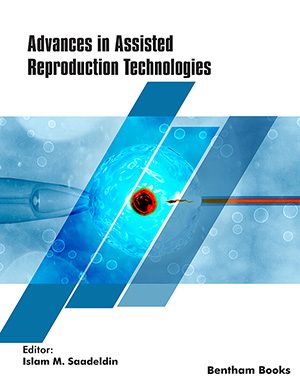Abstract
Background: The formation of plaque from protein fibrils is the major source of diseases, such as Alzheimer's and Prion diseases. Amyloid beta (Aβ) is a peptide with different lengths, which is one of the main components of the plaque in the brain of people with Alzheimer's. Of the amyloid beta of various lengths in the brain cells plaque, beta-amyloid with 40 amino acids (Aβ1- 40) is more abundant than the rest. Aβ monomers are in a dynamic equilibrium of various conformations with beta sheets that aggregate as oligomers or larger structures. The misfolding of betaamyloid peptide is involved in its accumulation. On the other hand, various species that exist in the cell environment can affect the structure of beta-amyloid peptides.
Aims: This study aimed to study the interaction of truncated forms of beta-amyloid peptide with human albumin serum protein.
Objective: Interaction of beta-amyloid peptide with other proteins is effective in causing Alzheimer's disease. These include interactions between beta-amyloid and cell surface proteins, such as prions and extracellular proteins, such as clusterins and human serum albumin (HSA). As HSA concentrations are higher than other proteins, more than half of the interaction of beta-amyloid with proteins is related to interaction with this protein. Interaction of HSA with beta-amyloid reduces the aggregation of beta-amyloid. However, due to the diversity of beta-amyloid peptides with different lengths, the mechanism of their interaction with HSA has not been well understood. In this work, the interaction of C-terminal truncated beta-amyloid peptides with HSA has been investigated.
Method: The C-terminal truncated forms of beta-amyloid peptides, Aβ1 - 26, Aβ1 - 30, and Aβ1 - 36 and Aβ1 - 40 were designed in silico. Docking between these truncated peptides was performed with serum albumin. A molecular dynamics simulation of the interaction of designed peptides with serum albumin was also performed.
Results and Discussion: The results showed that Aβ1 - 26 and Aβ1 - 30 peptides interact with the interfacial region of the chains A and B of HSA and the surface of the HSA. While the interaction of Aβ1 - 36 and Aβ1 - 40 peptides occurs only with the HSA surface. On the other hand, the interaction of peptides with chain A of HSA is more favorable than their interaction with chain B of HSA. Also, as the length of the peptide increases, the number of residues involved in the hydrophobic interaction increases. The results of molecular dynamics simulation confirm the results obtained from docking.
Conclusion: The results of molecular dynamics and docking simulations show that the binding affinity of peptides to serum albumin decreases with peptide shortening. Also, by changing the structure of beta-amyloid peptides, serum albumin reduces their tendency to aggregate.
Keywords: Protein-protein interaction, side chain, hydrophobic interaction, Alzheimer's, aggregation, beta-amyloid, fibrillation.
[http://dx.doi.org/10.1016/j.bbadis.2006.12.001] [PMID: 17208417]
[http://dx.doi.org/10.1021/cr500638n] [PMID: 25789869]
[http://dx.doi.org/10.1038/nature07761] [PMID: 19242475]
[http://dx.doi.org/10.1016/j.tig.2009.12.004] [PMID: 20080314]
[http://dx.doi.org/10.1006/bbrc.2000.2222] [PMID: 10679277]
[http://dx.doi.org/10.1128/jcm.10.3.346-350.1979] [PMID: 114535]
[http://dx.doi.org/10.1016/j.bbrc.2007.10.080] [PMID: 18028874]
[http://dx.doi.org/10.1074/jbc.274.23.15990] [PMID: 10347147]
[http://dx.doi.org/10.1074/jbc.C112.360800] [PMID: 22718756]
[http://dx.doi.org/10.1016/j.bpc.2021.106743] [PMID: 35093643]
[http://dx.doi.org/10.1016/j.bbamem.2018.01.015] [PMID: 29366673]
[http://dx.doi.org/10.1016/j.bbrc.2019.01.081] [PMID: 30685090]
[http://dx.doi.org/10.1021/acschemneuro.1c00150] [PMID: 34160192]
[http://dx.doi.org/10.1073/pnas.0905007106] [PMID: 19843697]
[http://dx.doi.org/10.1016/j.neuron.2013.06.036] [PMID: 24012003]
[http://dx.doi.org/10.1186/alzrt121] [PMID: 22621179]
[http://dx.doi.org/10.1016/j.bpj.2010.11.037] [PMID: 21190670]
[http://dx.doi.org/10.1016/j.bpj.2013.08.025] [PMID: 24094411]
[http://dx.doi.org/10.1006/prep.2000.1330] [PMID: 11087689]
[http://dx.doi.org/10.1074/jbc.274.41.29303] [PMID: 10506189]
[http://dx.doi.org/10.1093/protein/12.6.439] [PMID: 10388840]
[http://dx.doi.org/10.1002/cbic.200500223] [PMID: 16444756]
[http://dx.doi.org/10.1002/prot.25219] [PMID: 27936493]
[http://dx.doi.org/10.1038/nprot.2016.169] [PMID: 28079879]
[http://dx.doi.org/10.1002/prot.24403] [PMID: 23996272]
[http://dx.doi.org/10.1529/biophysj.108.135814] [PMID: 18676649]
[http://dx.doi.org/10.1126/science.6879170] [PMID: 6879170]
[http://dx.doi.org/10.1021/jp003919d]
[http://dx.doi.org/10.1063/1.2408420] [PMID: 17212484]
[http://dx.doi.org/10.1063/1.328693]
[http://dx.doi.org/10.1080/00268978300102851]
[http://dx.doi.org/10.1002/(SICI)1096-987X(199709)18:12<1463:AID-JCC4>3.0.CO;2-H]
[http://dx.doi.org/10.1063/1.464397]
[PMID: 29091991]
[http://dx.doi.org/10.1093/nar/gkt099] [PMID: 23430151]
[http://dx.doi.org/10.1016/j.bioorg.2016.11.003] [PMID: 27881238]
[http://dx.doi.org/10.1021/ar4002075] [PMID: 24368046]
[http://dx.doi.org/10.1038/nrd3842-c1] [PMID: 23493086]
[http://dx.doi.org/10.1006/jmbi.2001.4970] [PMID: 11580253]
[http://dx.doi.org/10.1073/pnas.0905127106] [PMID: 19706468]
[http://dx.doi.org/10.1074/jbc.M109.086496] [PMID: 20452980]
[http://dx.doi.org/10.1021/bi972979f] [PMID: 9693002]


























